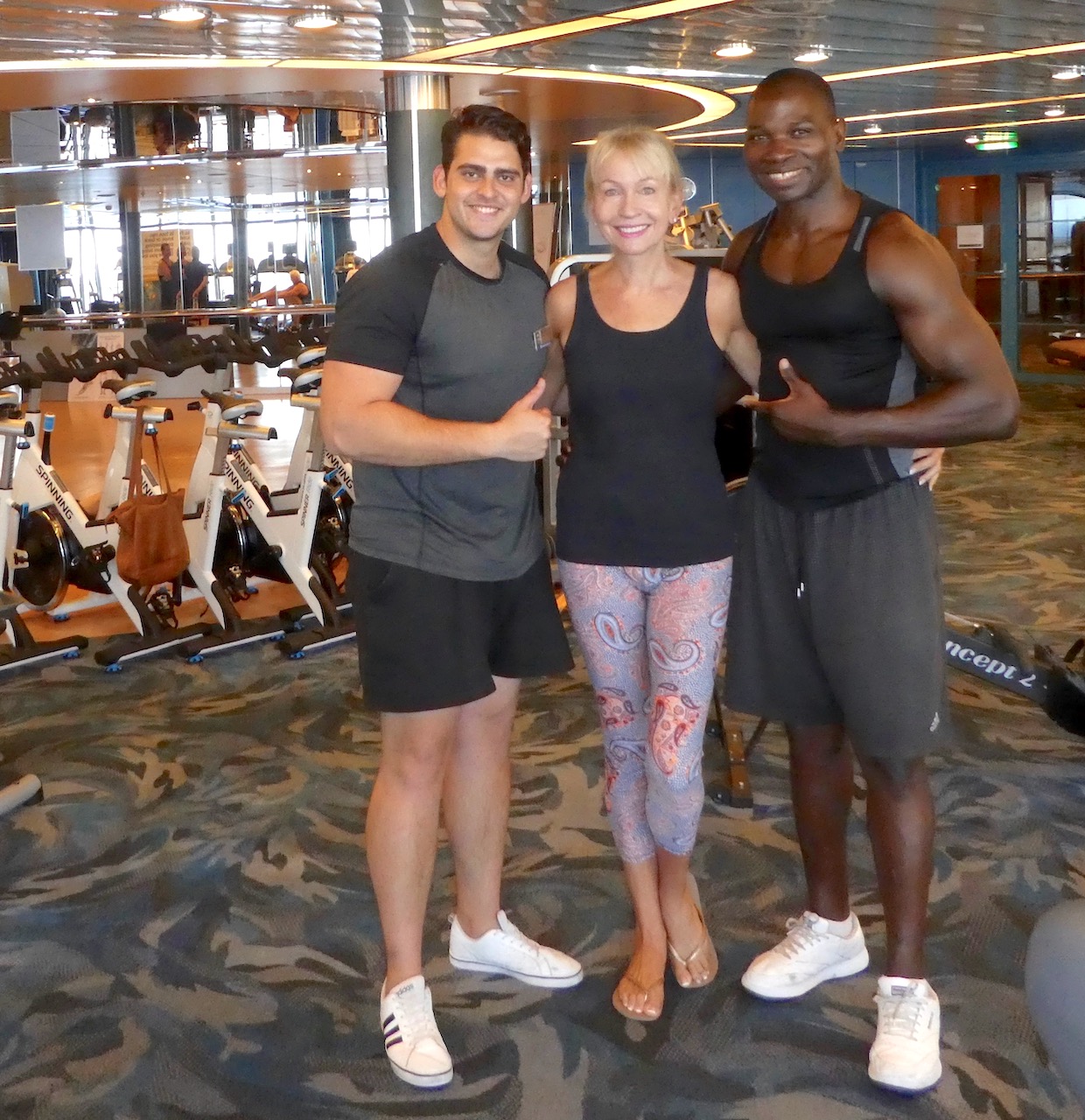What is creatine? Who should take creatine? Why to take it: to improve muscle strength, bone mass, brain health, memory, eyesight and hearing, and to prevent sarcopaenia and frailty. Keep track of muscle and promote anti-frailty with the InBody 570 body composition scanner.
What is creatine?
Creatine is an amino acid found mainly in muscle and brain tissue. Our livers, kidneys and pancreas naturally produce 1-2g of the stuff each day, mostly from eating fish and meat. In the form we’re likely to buy it, it’s a derivative of three amino acids: L-arginine, glycine and L-methionine. It’s also the most highly researched supplement out there – and you can be sure that it’s not just effective, but extremely safe.

According to Healthline.com, creatine grows muscle by causing numerous changes within muscle cells that signal the body to produce new muscle proteins and increase muscle mass. It also helps to maintain existing muscle mass by limiting protein breakdown – another win. And remember, its effect on muscle mass is just one of many benefits.
We’ve come a long way, baby
I first heard of creatine when son Carl (now 42) was in high school and wanted to grow big enough to make his school’s 1st XV rugby team. (Yes, he made the team.) Back then, I wrongly connected creatine with anabolic steroids, which some of the angrier boys may well have been taking, too. Clearly I knew nothing about creatine.
Over this past year, I’ve heard and read numerous recommendations to eat enough protein – especially as we grow older – so as to guard against sarcopaenia, the muscle-wasting that leads to frailty. Frailty is the enemy of longevity; having sufficient muscle makes us a lot harder to kill.
Frailty is the enemy of longevity; having sufficient muscle makes us a lot harder to kill.

So, about a month ago, I bought a small tub of ionised creatine monohydrate powder by Precision Nutrition at a local supplement shop that’s geared towards that sort of thing.

Supplement Mart is an Aussie chain that has recently opened just 2km up the road from us. It displaced a branch of Australia’s biggest health food retail group, Go Vita, which is a bit of a sore point with me – Go Vita stocks a wider variety of what I like. But I know it’s not fair to blame the new kid on the block for that.
The shelves at Supplement Mart are heavy on body-building supplements, such as the fat-burning OxyShred, which comes in wildly imaginative flavours – Bahama Breeze, anyone? Other best-sellers of theirs glory in macho names like Disorder, by Faction Labs; Enrage Black, a pre-workout concoction that boasts a “caffeine trifecta”; and Scorch Energize & Burn, by MAN Sports. Clearly not aimed at me, then.
V: “You’re a man, Roy. What do you think?”
R: “I think it’s a load of marketing shite.”

When and how to take creatine
Anyway, back to the much tried-and-tested creatine. First thing each morning, I stir a 5g spoonful into a glass of water for myself, plus another for Roy. Spring water for me, tap water for him. He has to draw the line somewhere – and this house is fitted with a very good whole-house filter. (Whether that makes the tapwater ideal for biohackers like us is another story – and perhaps another blogpost.)
Actually, I usually sneak some spring water into his glass, too. I don’t like that it comes in plastic – I buy the 10L containers of Aussie Spring Water* – but Pellegrino in bottles is a treat rather than a staple. (I too must draw the line somewhere, though reluctantly.)

He growled a bit at the beginning – something to do with me already taking a s$@#t-load of supplements; and do I even know how many pills and powders I actually swallow every day? (Don’t know.) Or how much all this snake-oil is costing? (Don’t care.)

Once he’d got that little lot off his chest, Roy settled nicely into the morning creatine routine. There may be a physiologically better time to take it – immediately before exercise or immediately after it, but the science doesn’t seem clear either way.
I try to spread my supplements out during the day, and to stack them* (take them together) in logical ways. On the other hand, I go with the argument that the best time of day to take a supplement is when you’re most likely to actually take it. For us, when it comes to creatine, that’s first thing in the morning.
(*For the record, I currently stack my morning creatine with 1,800mcg of NAC (N-acetyl cysteine), a pinch of L-tyrosine and 10g of myo-inositol.)
Why take creatine?
For me, it’s all about increasing muscle size, energy, resilience and bone strength. It also promises better memory and general brain health, lessening the number of times each day that I walk into a room and cannot remember what I went there for. I’m also hoping it will guard my precious eyesight – and promote anti-ageing and longevity in general.
Creatine is essential for the ATP energy cycle in every cell of the body. And, as nutrition guru Chris Masterjohn PhD says, creatine isn’t just a supplement for athletes. It’s for everyone: “It’s critical for digestion, mental health, protecting your hearing, and keeping your skin vibrant and youthful.”

: “It’s critical for digestion, mental health, protecting your hearing, and keeping your skin vibrant and youthful.” Chris Masterjohn, PhD
As for Roy, I suspect some of you think I’ve been starving the poor man – and maybe even that it’s gone too far. I wonder… how likely is it that all of that 35kg weight loss between February 2020 and July 2021 was fat and water-bloat? I think it’s safe to say he may have lost some muscle, too. And, as much as he’s enjoying his slinky hips, narrower torso and svelte little bottom, he could definitely do with bulking up a bit muscle-wise.

Anecdotes and more
When I returned to buy a second tub of creatine from Supplement Mart – a larger one, this time – I immediately bonded with the fit, 30-something sales assistant over its virtues. (Roy, meanwhile, was impatiently toe-tapping outside. What could we possibly be rabbiting on about for so long?)
She takes 5g every day, she told me, before her gym workout. Her father, a carpenter, does no exercise apart from his work. When he takes creatine, he feels well and strong. When he stops, his aches and pains return and he feels terrible. That’s just one anecdote, sure, but it’s supported by a lot of studies that show creatine increasing muscle mass even in the absence of exercise.
My own first foray into creatine was around three years ago, in Durban, when I took some lessons from my lovely friend Rai Jones, a personal trainer. As usual eager for fast results, I embarked on a creatine loading phase: 20g daily for the first five to seven days. But I stopped it before even getting to the recommended daily maintenance phase of 3-5g.Why? Pure vanity – it caused my stomach – never my strongest point – to balloon, and I looked horrible in my jeans.
Luckily, research shows there’s no need for the loading phase – or that icky bloat, short-lived though it may be. With just the standard dose, our bodies reach the optimal level after around 30 days. That’s what I’ve been finding this time around.
With the evidence of creatine protecting existing muscle or growing new muscle mass, even in the absence of strength training, it’s a good idea to take it every day. I’ll probably cut my dose down to 3g after a couple of months, and see how I go.
InBody 570 body composition scanner

In case you’re wondering exactly how I’m going to see how I go, I have a plan. My gym at Craigie Leisure Centre has a state-of-the-art body composition scanner – the InBody 570. The InBody 570 is a medical grade appliance that goes beyond traditional body composition analysis, letting you monitor levels of body fat, visceral fat, bone mass, lean muscle mass, fluid levels and much more.
As a Craigie member, you can request an assessment as often as you like. Usefully, the system will compare your current reading with previous ones. The bottom left corner of one of my 2019 printouts, below, shows how I lost fat while simultaneously gaining both skeletal mass and muscle – all because I started resistance training three times a week, for the first time.

To be honest, that gym routine was never my favourite thing to do. I stuck to it nevertheless, and it became a habit. I’m having more fun nowadays at my gym’s Les Mills Body Pump classes: tightly choreographed, super-energetic sessions to loud music supervised by (sometimes) fierce and (always) terrifyingly fit instructors. Luckily, you can choose your own weights and progress at your own pace. I also enjoy the Les Mills Body Balance classes, a challenging mixture of tai chi, yoga and Pilates moves.

All this is a great thing! Though decades of running have given me stronger legs, my upper body is still woefully weak – and those push-ups don’t seem to get any easier. So, I need all the help I can get. Hurrah for creatine!
Next week, something completely different – the health benefits of donating blood. I scheduled it for a few days before Halloween, getting in just before the vampires.




